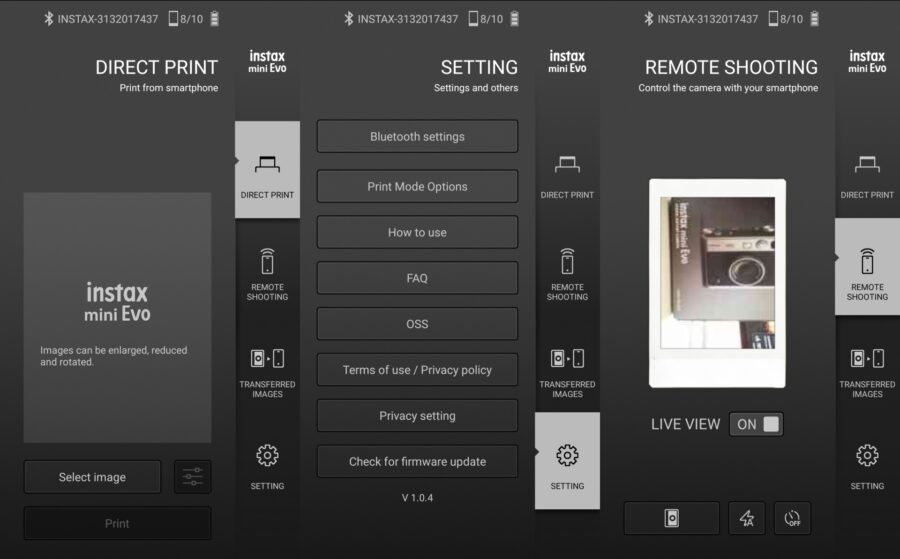To date we have reviewed almost every Instax instant camera that Fujifilm has released in South Africa. Some have impressed as a retro-styled device that offers a hint of nostalgia and others simply felt overpriced given what was on offer.
Where does the latest offering, the Instax Mini Evo, sit then? We spent the past couple of weeks with this hybrid instant camera to find out.
Before we delve into our experience, let’s run through what makes the Instax Mini Evo different to previous devices in the popular Instax lineup.
Best of both?
As you may have gauged from the above, it features a hybrid design, which means it comes a regular instant camera performance akin to some of the earlier iterations of Instax, along with a printing interface to print images from your smartphone in the instant film format.
As such, it should be serving up the best of both worlds, right?
Well we are on the fence about this one. We have reviewed the pure printer Instax devices and have found those to be far better alternatives to the regular Instax camera, mainly as it leverages the quality of the phone’s camera, which dwarves anything that Fujifilm can muster on its instant camera variants.
It is why we fell in love with the Instax Link Wide, with its wider format instant film just looking better in general to the normal 8.6cm x 5.4cm ones that the Mini Evo and other options utilise.
Style vs. Substance
Shifting focus to the Mini Evo and its design, there is a lot to like here, especially if you are fans of the retro styling that reminds us of the X series mirrorless cameras that Fujifilm makes. The design is also quite compact and not as cumbersome as some of the earlier standalone Instanx cameras of a few years ago.
That said, anyone expecting something premium, like the Square SQ6, are out of luck, with the plastic heavy Mini Evo feeling a little cheap in places. The black full grain leather-esque elements for example look good from afar, but are less impressive close up.
One aspect that the Mini Evo is quite interesting though are the different feature buttons littered across the device, such the pull mechanism to print images that you select from your image library on-camera, helping to add tot he retro-inspired feel.
The dial to cycle through 10 different image filters is also quite handy, as is the functional rotating front-facing 1/5-inch CMOS lens which goes through 10 lens effects.
This is supposed to yield as many as 100 shooting options for users, according to Fujifilm, so there is a bit to play with compared to past Instax cameras, but we still find the breadth of editing and customisation available via the Mini Evo app (iOS and Android) far easier.
Added costs
Speaking of which, Fujifilm really needs to create one unified Instax camera app, instead of releasing new ones to go with each device, all of which yield wildly different UI experiences. To date, the Link Wide app is perhaps the best we have encountered so far.
Looking at the quality of the prints now and we are fairly familiar with the system at work here. As the name of this hybrid camera suggests, it uses the Instax Mini film, which we find a little small for our purposes.
Again our preference leans towards the Square or Wide Instant Film, simply as there is more real estate and a better canvas for printing images captured via your phone.
There’s also the cost of instant film packs to consider too, which is pricey at roughly R175 for a 10-pack. As such, we’d feel much better about printing out a higher res image from our phone than one captured on the Mini Evo.
Final verdict
At R2 495 (RRP), the Instax Mini Evo is on the pricey side, but this is balanced by the fact that it is probably the most featured packed instant camera we have encountered to date.
That said, for that price, we think your money would be better spent on something like the Link Wide, which not only features a larger instant film format, but also has a better mobile app and can print images from your phone. The Mini Evo can do the same thing, but simply does not utilise as good a format of instant film.
As more and more Instax camera hit the market, we increasingly find ourselves drawn to the printer-only options, which means that this hybrid, while feature-rich, is simply not a device we are drawn too as much as the prints themselves.






